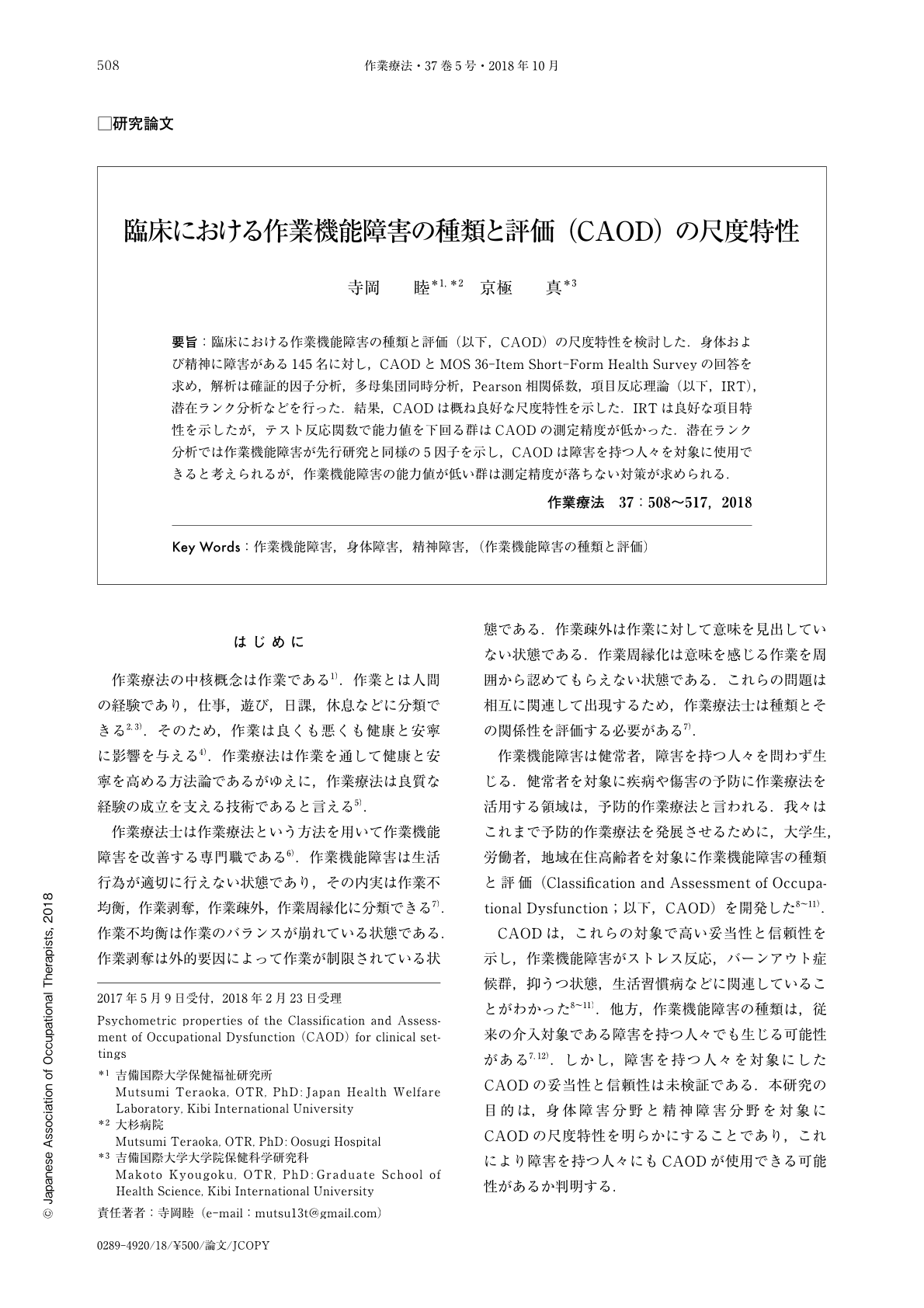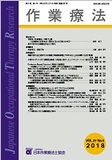Japanese
English
- 販売していません
- Abstract 文献概要
- 1ページ目 Look Inside
- 参考文献 Reference
- サイト内被引用 Cited by
要旨:臨床における作業機能障害の種類と評価(以下,CAOD)の尺度特性を検討した.身体および精神に障害がある145名に対し,CAODとMOS 36-Item Short-Form Health Surveyの回答を求め,解析は確証的因子分析,多母集団同時分析,Pearson相関係数,項目反応理論(以下,IRT),潜在ランク分析などを行った.結果,CAODは概ね良好な尺度特性を示した.IRTは良好な項目特性を示したが,テスト反応関数で能力値を下回る群はCAODの測定精度が低かった.潜在ランク分析では作業機能障害が先行研究と同様の5因子を示し,CAODは障害を持つ人々を対象に使用できると考えられるが,作業機能障害の能力値が低い群は測定精度が落ちない対策が求められる.
The purpose of this study was to examine the psychometric properties of the Classification and Assessment of Occupational Dysfunction (CAOD) in clinical setting including both physical and mental disability fields. A sample of 145 clients with disabilities completed the CAOD and the MOS 36-Item Short-Form Health Survey (SF-36). We performed Kolmogorov-Smirnov test, confirmatory factor analysis (CFA), latent class based multiple group analysis (LCBMGA), correlation analysis, polyserial correlation analysis, factor contribution ratio, Cronbach's alpha and McDonald's omega coefficient, item response theory (IRT), and latent rank analysis (LRA). As a result, the Kolmogorov-Smirnov test indicated a normal distribution; CFA was generally positive. In a multiple group structural equation modeling, the LCBMGA showed a measurement invariance in a CAOD and SF-36 showed some correlation. The results of the polyserial correlation analysis, factor contribution ratio, Cronbach's alpha and McDonald's omega coefficient were one-dimensional. IRT exhibited good item characteristics. However, when targeting average or below average occupational dysfunction, the measurement accuracy of CAOD decreased. LRA showed occupational dysfunction of a factor of 5 which is in line with previous studies. This study found that CAOD can be used for clients with disabilities. However, future research should modify the CAOD to prevent deterioration of measurement precision when targeting persons with mild occupational dysfunctions.

Copyright © 2018, Japanese Association of Occupational Therapists. All rights reserved.


